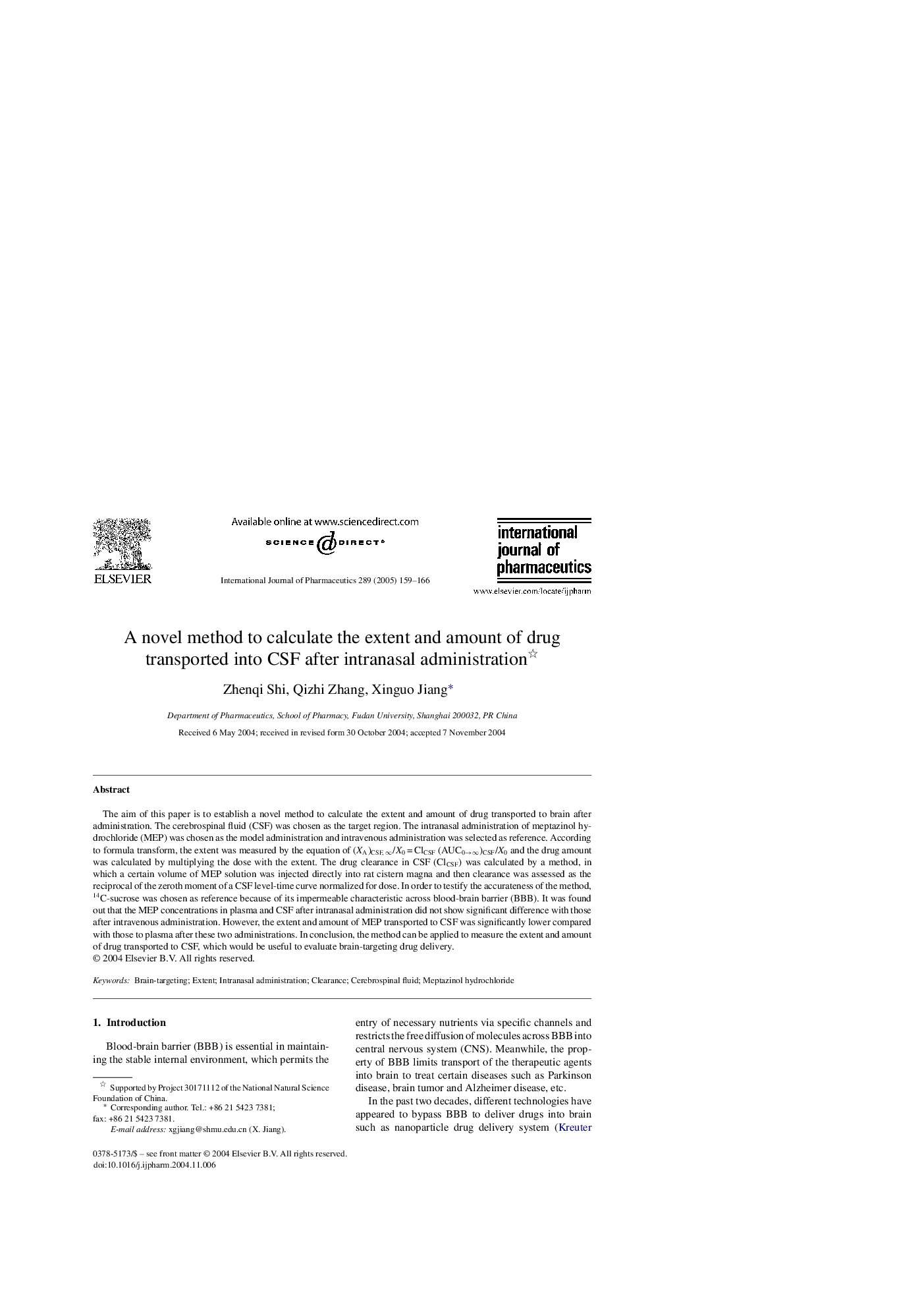| Article ID | Journal | Published Year | Pages | File Type |
|---|---|---|---|---|
| 9918980 | International Journal of Pharmaceutics | 2005 | 8 Pages |
Abstract
The aim of this paper is to establish a novel method to calculate the extent and amount of drug transported to brain after administration. The cerebrospinal fluid (CSF) was chosen as the target region. The intranasal administration of meptazinol hydrochloride (MEP) was chosen as the model administration and intravenous administration was selected as reference. According to formula transform, the extent was measured by the equation of (XA)CSF, â/X0Â =Â ClCSF (AUC0ââ)CSF/X0 and the drug amount was calculated by multiplying the dose with the extent. The drug clearance in CSF (ClCSF) was calculated by a method, in which a certain volume of MEP solution was injected directly into rat cistern magna and then clearance was assessed as the reciprocal of the zeroth moment of a CSF level-time curve normalized for dose. In order to testify the accurateness of the method, 14C-sucrose was chosen as reference because of its impermeable characteristic across blood-brain barrier (BBB). It was found out that the MEP concentrations in plasma and CSF after intranasal administration did not show significant difference with those after intravenous administration. However, the extent and amount of MEP transported to CSF was significantly lower compared with those to plasma after these two administrations. In conclusion, the method can be applied to measure the extent and amount of drug transported to CSF, which would be useful to evaluate brain-targeting drug delivery.
Related Topics
Health Sciences
Pharmacology, Toxicology and Pharmaceutical Science
Pharmaceutical Science
Authors
Zhenqi Shi, Qizhi Zhang, Xinguo Jiang,
